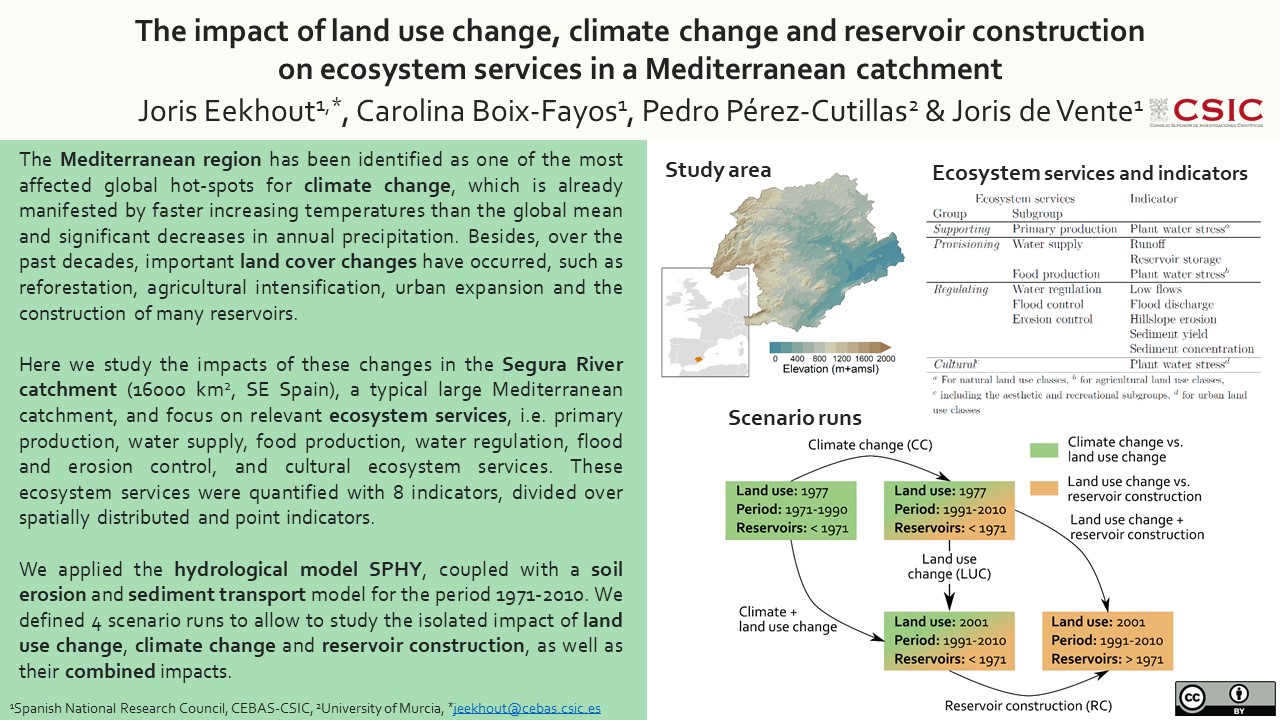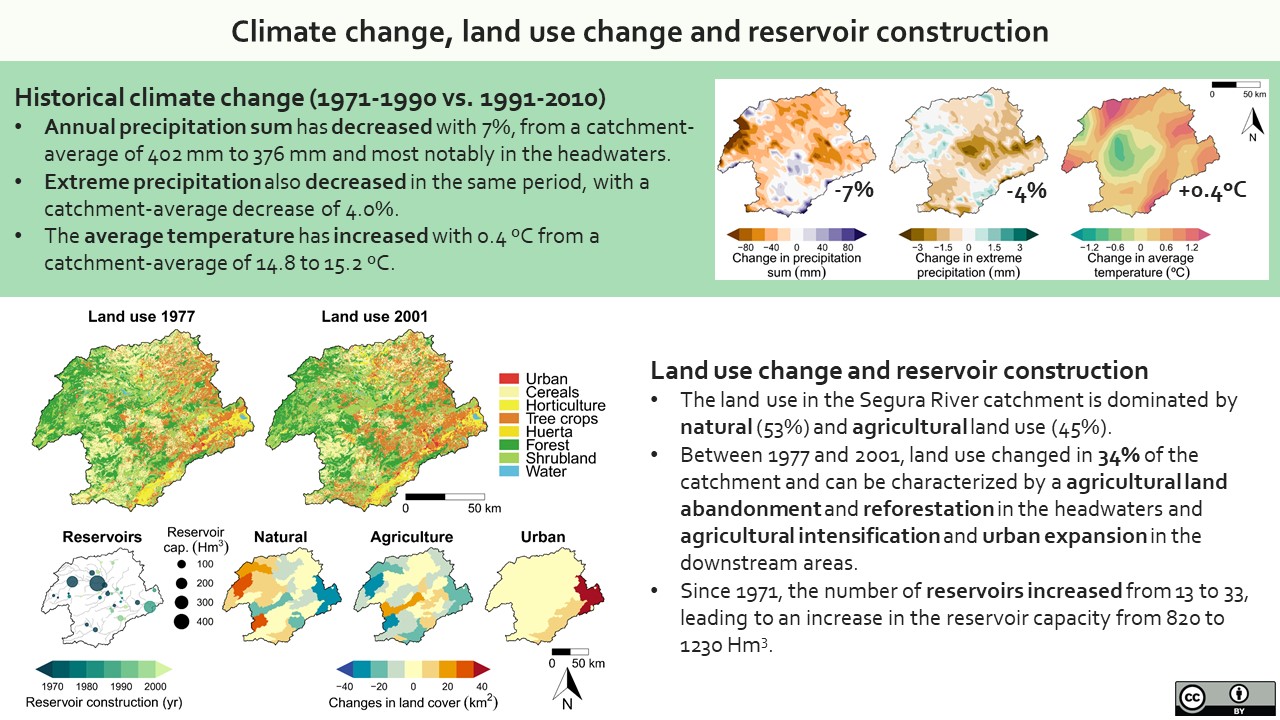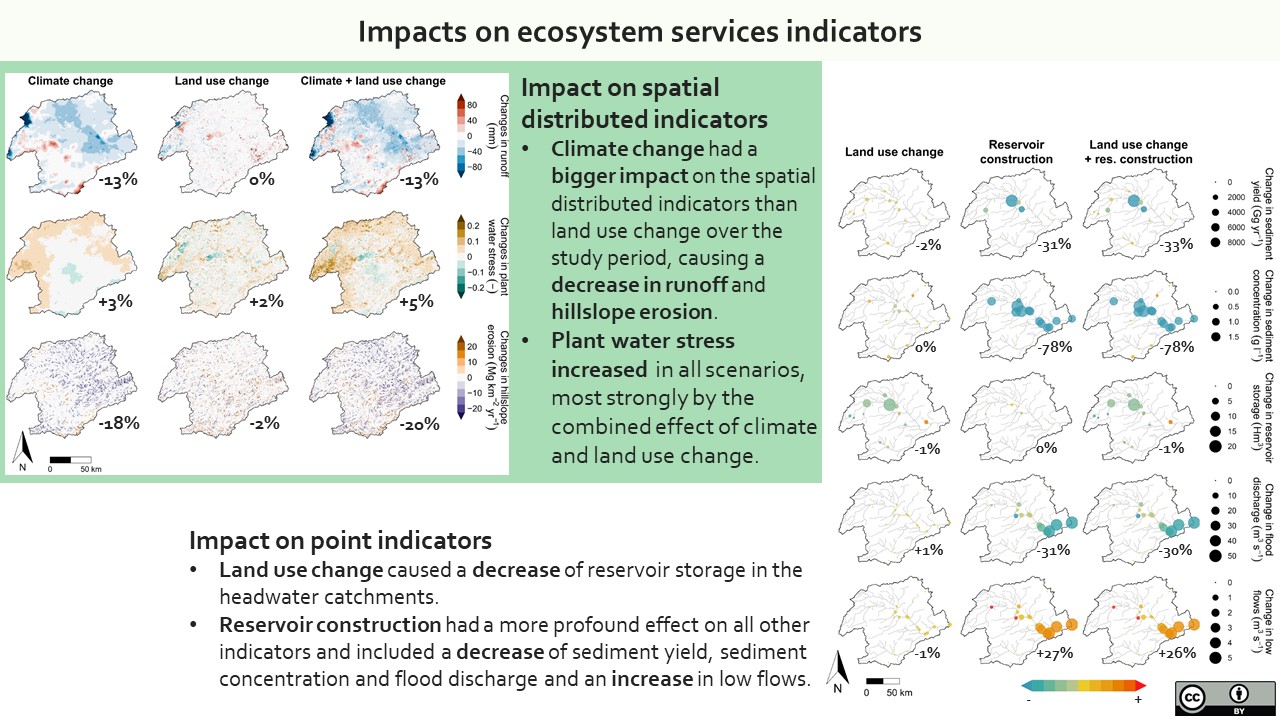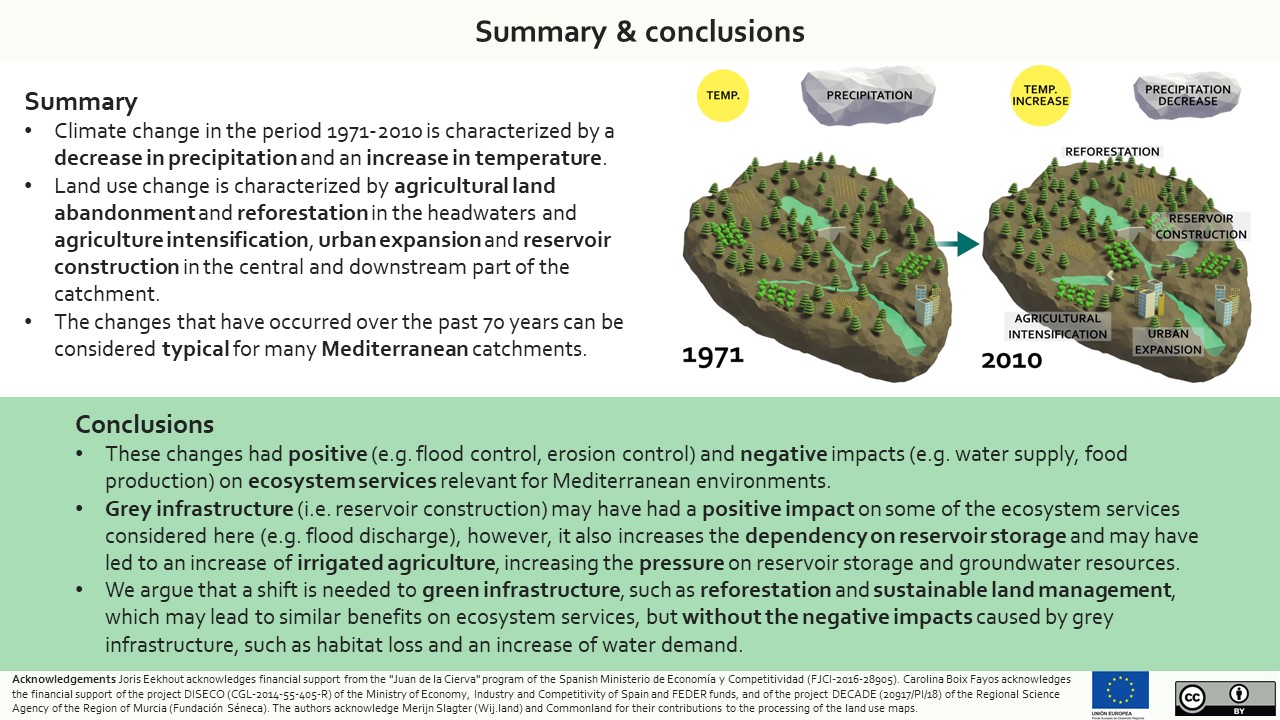May 4-8, 2020
EGU General Assembly, Vienna, Austria
Abstract
The Mediterranean region has been identified as one of the most affected global hot-spots for climate change. Recent climate change in the Mediterranean can be characterized by faster increasing temperatures than the global mean and significant decreases in annual precipitation. Besides, important land cover changes have occurred, such as reforestation, agricultural intensification, urban expansion and the construction of many reservoirs, mainly with the purpose to store water for irrigation. Here we study the impacts of these changes on several ecosystem services in the Segura River catchment, a typical large Mediterranean catchment where many of the before mentioned changes have occurred in the last half century. We applied a hydrological model, coupled with a soil erosion and sediment transport model, to study the impact of climate and land cover change and reservoir construction on ecosystem services for the period 1971-2010. Eight ecosystem services indicators were defined, which include runoff, plant water stress, hillslope erosion, reservoir sediment yield, sediment concentration, reservoir storage, flood discharge and low flow. To assess larger land use changes, we also applied the model for an extended period (1952-2018) to the Taibilla subcatchment, a typical Mediterranean mountainous subcatchment, which plays an important role in the provision of water within the Segura River catchment. As main results we observed that climate change in the evaluated period is characterized by a decrease in precipitation and an increase in temperature. Detected land use change over the past 50 years is typical for many Mediterranean catchments. Natural vegetation in the headwaters increased due to agricultural land abandonment. Agriculture expanded in the central part of the catchment, which most likely is related to the construction of reservoirs in the same area. The downstream part of the catchment is characterized by urban expansion. While land use changed in more than 30% of the catchment, most impact on ecosystem services can be attributed to climate change and reservoir construction. All these changes have had positive and negative impacts on ecosystem services. The positive impacts include a decrease in hillslope erosion, sediment yield, sediment concentration and flood discharge (-21%, -18%, -82% and -41%, respectively). The negative impacts include an increase in plant water stress (+5%) and a decrease in reservoir storage (-5%). The decrease in low flow caused by land use change was counteracted by an increase in low flow due to reservoir construction. The results of our study highlight how relatively small climate and land use changes compared to the changes foreseen for the coming decades, have had an important impact on ecosystem services over the past 50 years.
×




1/4
We studied the impacts of land use change, climate change and reservoir construction in the Segura River catchment (SE Spain), a typical large Mediterranean catchment, and focus on relevant ecosystem services, i.e. primary production, water supply, food production, water regulation, flood and erosion control, and cultural ecosystem services.
2/4
Climate change in the period 1971-2010 is characterized by a decrease in precipitation and an increase in temperature. Land use change is characterized by agricultural land abandonment and reforestation in the headwaters and agriculture intensification, urban expansion and reservoir construction in the central and downstream part of the catchment.
3/4
Climate change had a bigger impact on the spatial distributed indicators than land use change. Reservoir construction had a profound effect on most point indicators and included a decrease of sediment yield, sediment concentration and flood discharge and an increase in low flows.
4/4
Land use change, climate change and reservoir construction had positive (e.g. flood control, erosion control) and negative impacts (e.g. water supply, food production) on ecosystem services relevant for Mediterranean environments. We argue that a shift is needed to green infrastructure, which may lead to similar benefits on ecosystem services as gray infrastructure, but without its negative impacts.